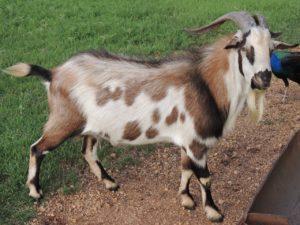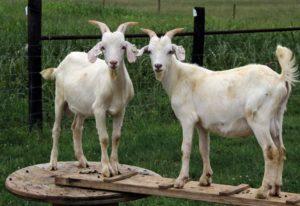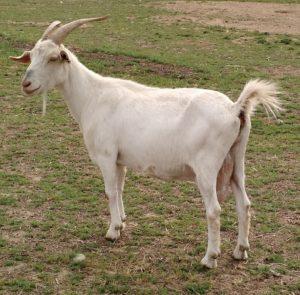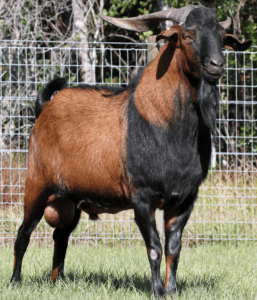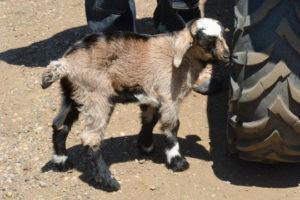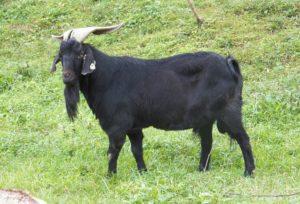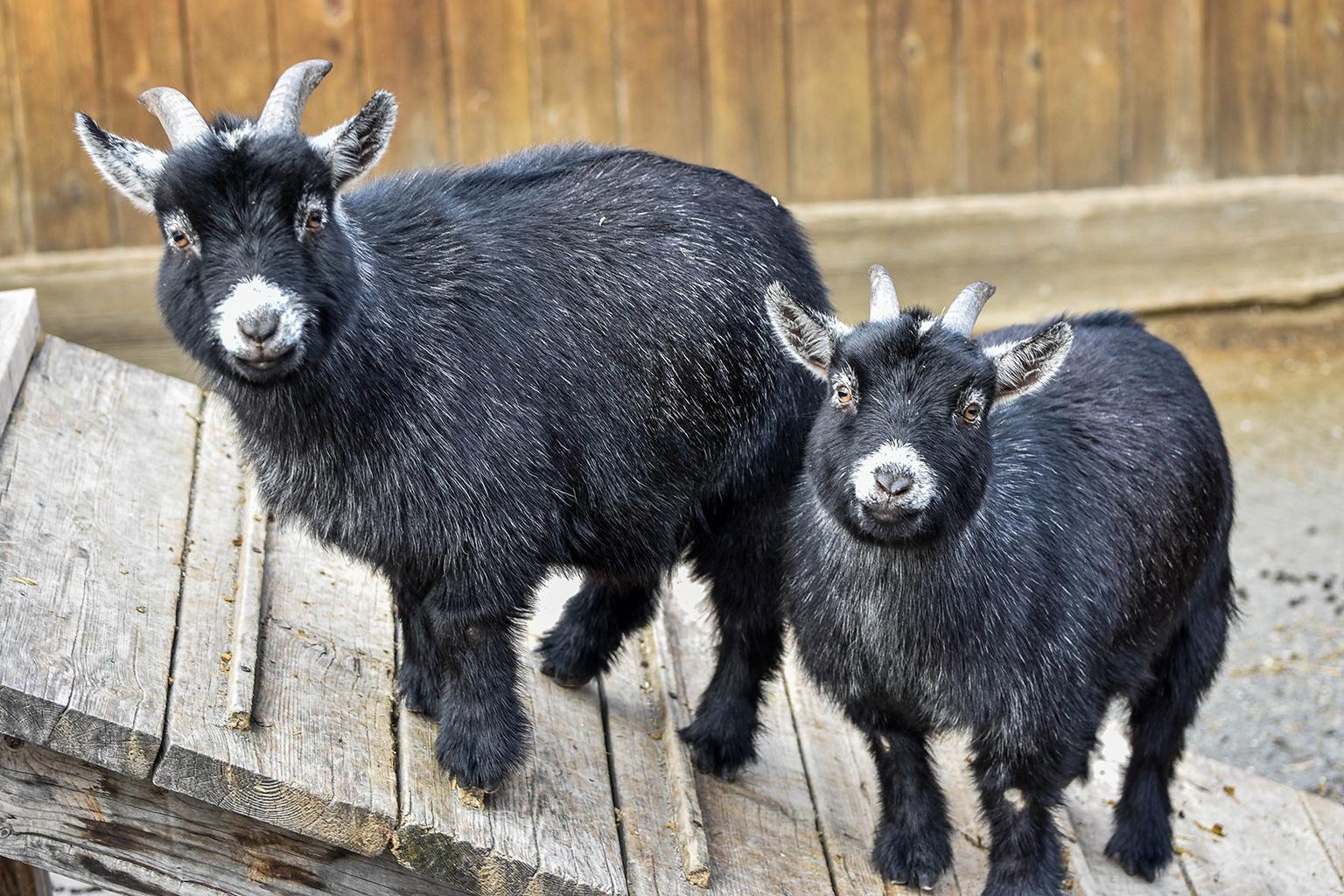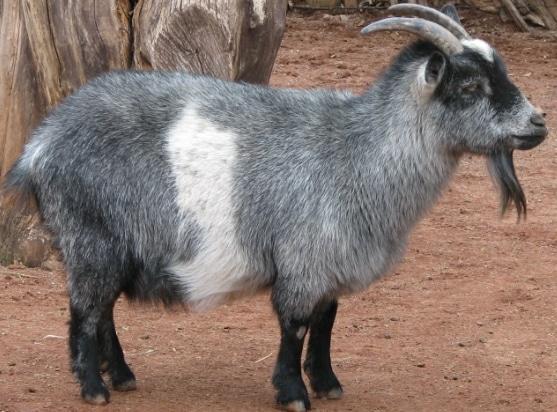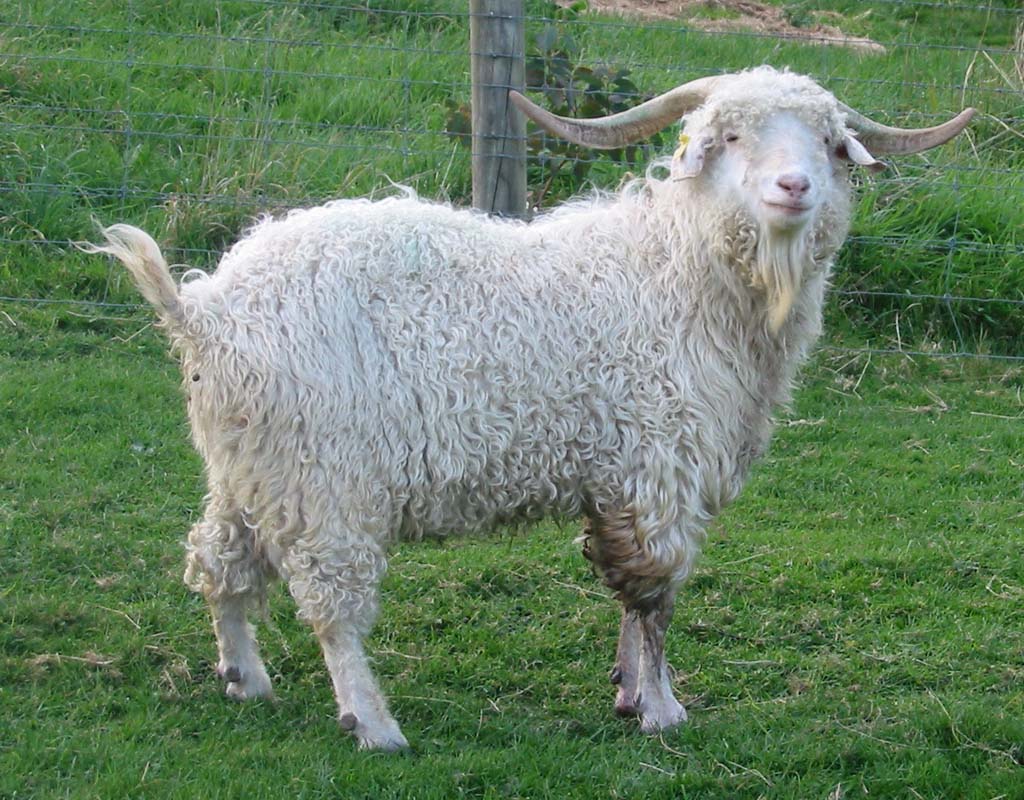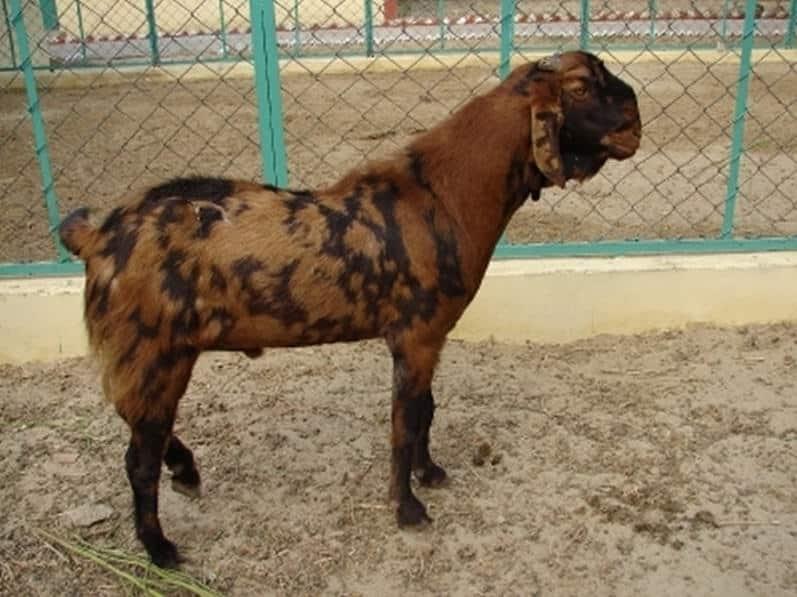Kiko Goat
Kiko in traditional Maori language translates to meat, rightly defining the primary function of this breed, i.e. producing meat. Indigenous to New Zealand, the Kiko results from crossbreeding the local feral and imported dairy goats.
One of their characteristic features is their hardiness and ability to gain weight even under natural conditions without extra feeding, raising them to the status of excellent meat goats.
| Also Known As | Not recorded |
| Physical Characteristics | Large-sized, muscular, stocky built, erect ears, broad muzzle, and thick well-spaced horns curved outwards |
| Temperament/Personality | Active, alert, calm, and easy-going |
| Color | Mostly white or cream, though some even come in darker colors like black; their eye color is mostly white, blue or brown |
| Coat | Short and smooth to thick (varying according to the environment) |
| Size | Large |
| Weight | Adult Bucks: 110 – 140 kg (242.5 – 308.6 pound) Adult Does: 45 – 80 kg (99.2 – 176.pound) Kids: At 8 months 27 – 40 kg (59.5 – 88.18 pound); At 15 months 45 – 70 kg (99.2 – 154.3 pound) |
| Height | Bucks: 76 – 94 cm (30 – 37 inches) Does: 66 – 76 cm (26 – 30 inches) |
| Uses | Mainly meat production |
| Diet | Alfalfa hay, molato, sorghum, gini grass, legumes, pellets, corn silage, and different green grass varieties |
| Lactation Period | 5 months |
| Lifespan | 8 – 12 years |
| Climate Tolerance | High (able to survive cool, wet, arid, and warm climatic conditions) |
| Country of Origin | New Zealand |
| Standard and Qualification Information | American Kiko Goat Association, International Kiko Goat Association , National Kiko Goat Registry |
History and Development
The Kiko goat is a recent breed developed by Garrick and Anna Batten during the 1980s. In 1978 the breeding process began. About 20 heavy and stocky feral females were bred with dairy farm bucks The outcome was sturdy, hardy, and stout kids. The males born of productive dairy dams belonging to breeds like the Saanen, Toggenburg, and Anglo Nubian were selected.
The role of the dairy bucks in the breeding process lasted till 1986, after which only Kiko sires were allowed to crossbreed with the feral does. The ultimate purpose of the entire breeding program was to produce healthy and hardy kids that could survive in the hilly terrain of New Zealand.
The Kikos mostly coexisted with the sheep population in the steep hilly regions of New Zealand, surviving on low-grade pasture. In 1992, they were imported by the Goatex Group LLC to the United States. Here, they have been acknowledged by three different registries, namely the American Kiko Goat Association (AKGA), International Kiko Goat Association (IKGA), and the National Kiko Registry, the largest of the three.
These agencies registered purebred Kikos, having their bloodlines linked to the original stocks of New Zealand. In their country of origin, the Boer goat overpowered them. However, the Kiko gained prominence over the latter in the United States. The Boers found it challenging to cope with the humid conditions of the subtropical southeastern states. They even made their way to Canada in 1998, though gaining popularity only after 2000.
Meat Production
They excel as great meat goats because of their hardiness, rapid growth rate (mainly seen in kids), and increased parasite resistance. They have a lower price than the Boer goats but cost more than several other meat goat breeds.
Milk Production
Despite being a meat goat, the Kiko produces a good amount of milk, though only during the 5-month lactation period per kid. They produce sufficient milk to raise multiple kids since these goats have medium-sized teats and a well-rounded udder. Their milk has butterfat of about 7%, relatively low than dairy goats because of their short milking phase.
Kidding
The hardy females do not require much assistance during kidding, having a gestation period of about 150 days. Most of them deliver twins, while some even produce triplets.
Interesting Facts
- The crosses of the Kiko and Boer goats are called Genemaster, registered by the National Kiko Goat Registry (NKR).
- A commercial Kiko doe costs around $300, while a registered buck with a good bloodline comes for about $1500.


